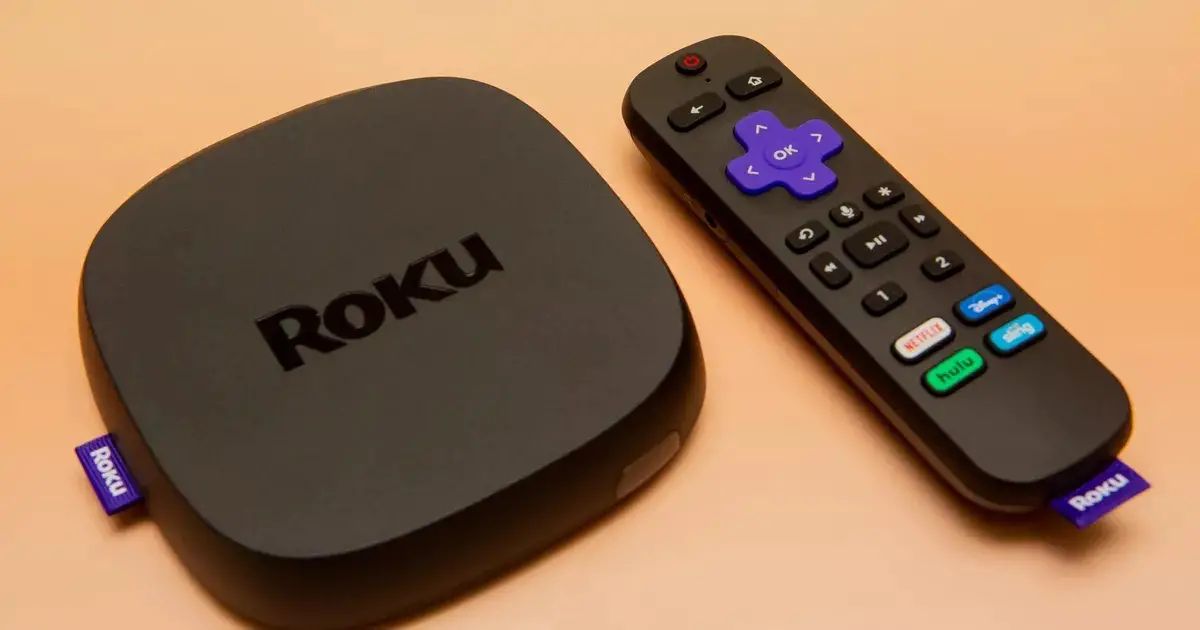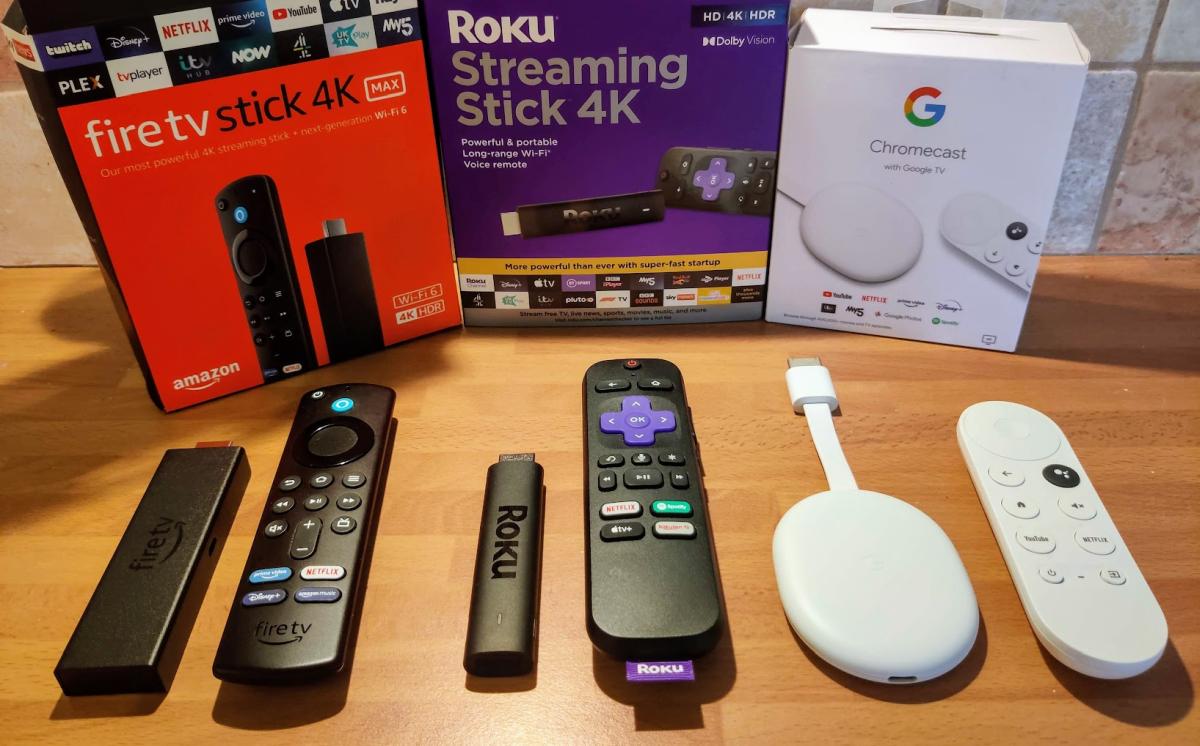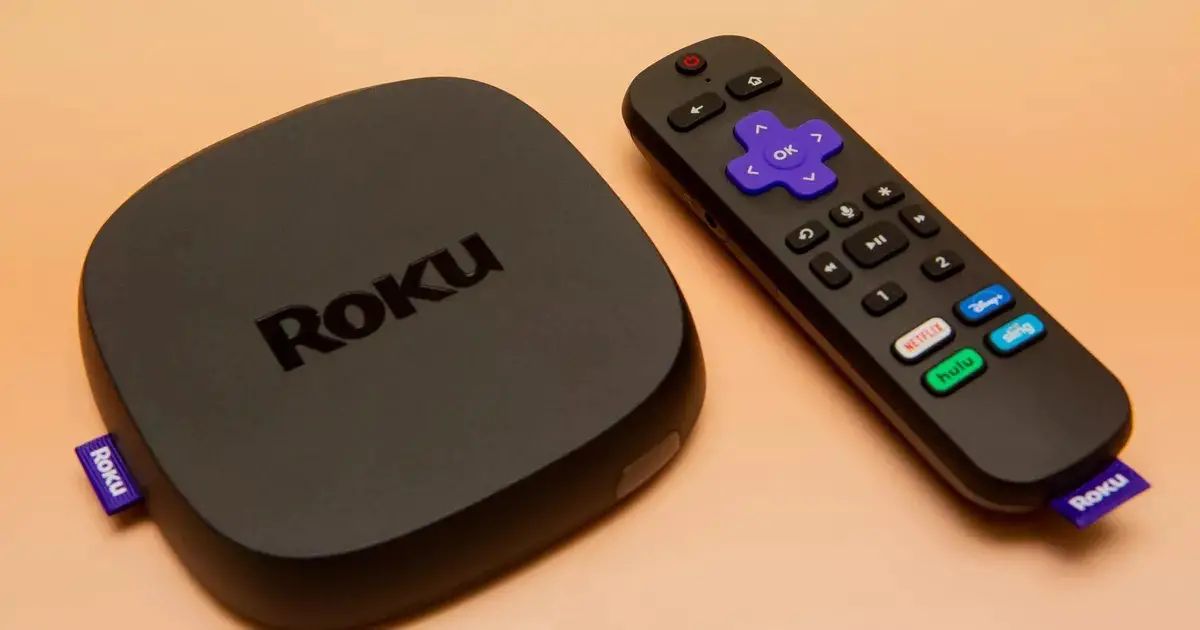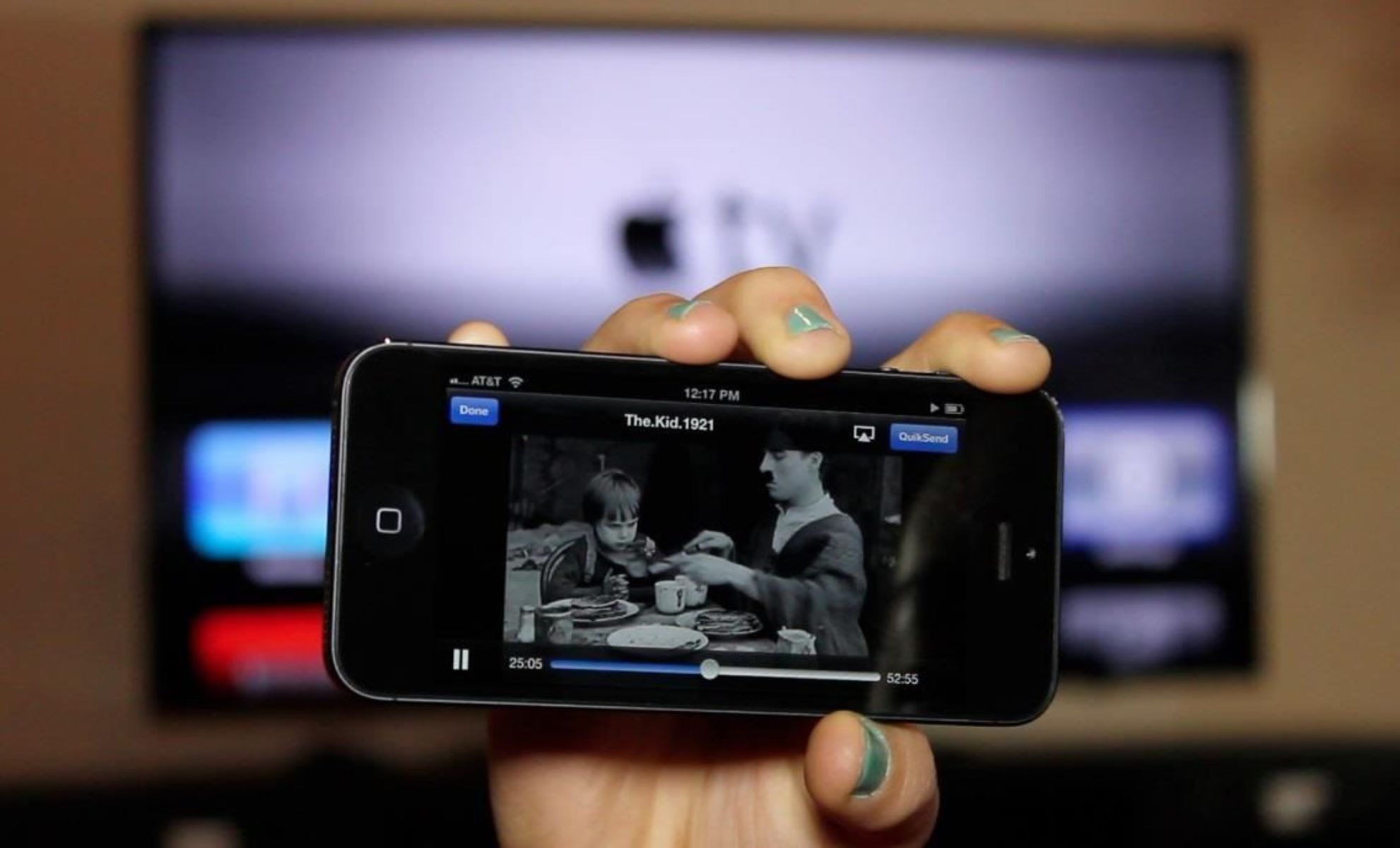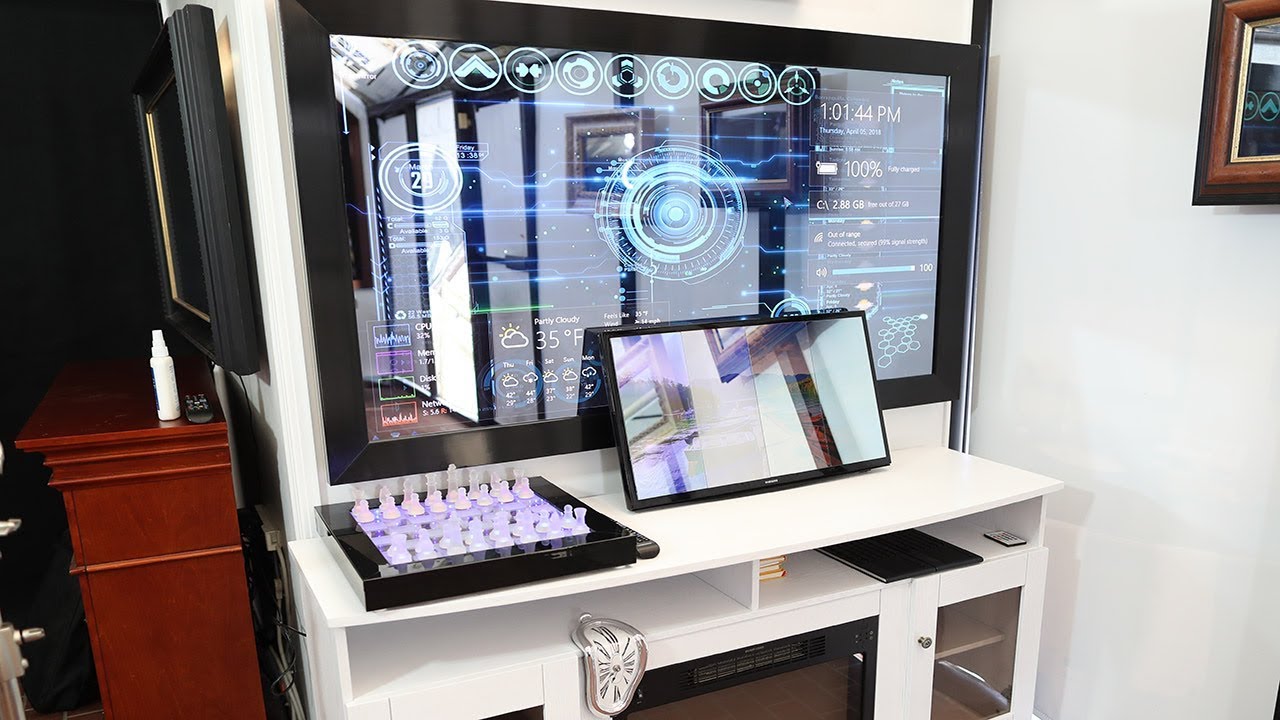Introduction
Welcome to the world of streaming devices, where you can easily access your favorite movies, TV shows, and music with just a few clicks. Two popular streaming devices that have gained immense popularity in recent years are Roku and Chromecast. Both devices offer a seamless streaming experience and provide access to a wide range of content from various streaming services. But can you use both devices together? Can you Chromecast on Roku? Let’s find out!
Roku is a leading streaming media player that allows you to stream content from popular platforms such as Netflix, Hulu, and Amazon Prime Video, among others, directly to your TV. It offers a user-friendly interface, a vast library of channels, and supports both free and subscription-based content. On the other hand, Chromecast is a digital media player developed by Google that allows you to stream content from your mobile device or computer to your TV. It works by connecting to your TV’s HDMI port and allows you to cast content from various apps, including YouTube, Netflix, and Spotify, onto the big screen.
Now, you might be wondering if you can combine the two devices to enhance your streaming experience. The good news is that Roku devices do not natively support casting from other devices, such as Chromecast. However, there is a workaround that allows you to Chromecast on Roku using the Screen Mirroring feature.
In this article, we will guide you through the steps on how to Chromecast on Roku, enabling you to cast content from your mobile device or computer to your Roku-connected TV. Whether you want to stream your favorite videos, photos, or even play games on a larger screen, this guide will help you achieve that.
What is Roku?
Roku is a popular streaming media player that revolutionizes how we consume digital content on our TVs. It offers a simple and intuitive interface that allows users to access a wide range of streaming services, channels, and apps. With a Roku device connected to your TV, you can easily stream movies, TV shows, music, and even play games directly on the big screen.
One of the key features that sets Roku apart from other streaming devices is its extensive content library. Roku provides access to over 500,000 movies and TV episodes, making it one of the largest collections of streaming content available. Users can enjoy popular streaming services like Netflix, Hulu, Amazon Prime Video, Disney+, and many more. Additionally, Roku also offers a variety of free streaming channels, providing endless entertainment options without the need for a subscription.
Roku devices come in various forms to cater to different user preferences. You can choose from compact streaming sticks, portable devices, or even smart TVs with built-in Roku functionality. The setup process is straightforward and doesn’t require any technical expertise. Simply connect the Roku device to your TV, follow the on-screen instructions, and you’re ready to start streaming.
With Roku, you have the flexibility to customize your streaming experience. The Roku Channel Store allows you to add and remove channels as per your preferences, so you only see what you want to watch. The device also offers a powerful search feature, which allows you to find movies, TV shows, actors, or directors across multiple streaming services, saving you time and effort.
Furthermore, Roku supports both HD and 4K UHD content, so you can enjoy your favorite shows and movies in stunning picture quality. It also includes features like private listening, which enables you to connect headphones and enjoy your content without disturbing others.
Overall, Roku is a versatile streaming device that offers a user-friendly experience, a vast content library, and a wide range of features to enhance your home entertainment. Whether you’re a movie buff, a TV show enthusiast, or simply want to unwind with some music or games, Roku has something to offer for everyone.
What is Chromecast?
Chromecast is a popular digital media player developed by Google that allows you to stream content from your mobile device or computer to your TV. It is a small dongle that plugs into your TV’s HDMI port, turning it into a smart TV capable of streaming a wide range of multimedia content.
One of the key features of Chromecast is its ability to cast content from various apps directly to your TV. Whether it’s streaming videos from YouTube, Netflix, or Hulu, playing music from Spotify or Pandora, or even mirroring your smartphone or computer screen, Chromecast enables you to enjoy your favorite content on the big screen with just a few simple steps.
Setting up Chromecast is a breeze. All you need is a compatible TV with an HDMI port, a stable Wi-Fi connection, and the Chromecast device. Plug the Chromecast into the HDMI port, power it up using either a USB port on your TV or a power outlet, and then follow the on-screen instructions to connect it to your Wi-Fi network. Once set up, you can control Chromecast using your mobile device, computer, or even with voice commands through Google Assistant.
Chromecast supports a wide range of streaming apps across different platforms, giving you access to a vast library of movies, TV shows, music, and more. Whether you want to watch the latest Netflix series, stream live sports events, or discover new videos on YouTube, Chromecast provides a seamless and intuitive streaming experience.
Aside from streaming content from popular apps, Chromecast also allows you to mirror your smartphone, tablet, or computer screen onto the TV. This feature comes in handy when you want to view photos or videos on a larger display, give presentations, or play mobile games with friends and family.
Furthermore, Chromecast offers multi-room audio support, allowing you to create a synchronized audio experience across multiple Chromecast devices in different rooms. This means you can play the same music in your living room, bedroom, and kitchen simultaneously.
Overall, Chromecast provides a convenient and affordable way to transform your TV into a smart streaming device. Its ease of use, compatibility with various apps, and screen mirroring capabilities make it a popular choice for those looking to enhance their entertainment options and enjoy an immersive viewing experience.
Can you Chromecast on Roku?
As mentioned earlier, Roku devices do not natively support Chromecast, as they have their own screen mirroring feature. However, there is a workaround that allows you to Chromecast on Roku and cast content from your mobile device or computer to your Roku-connected TV. By using the Screen Mirroring feature on Roku, you can easily mirror the screen of your smartphone, tablet, or computer onto your TV.
To Chromecast on Roku, you simply need to ensure that your mobile device or computer and your Roku device are connected to the same Wi-Fi network. Once you have confirmed this, you can follow a few simple steps to enable Screen Mirroring on your Roku device:
- On your Roku remote, press the Home button to access the main menu.
- Scroll up or down and select “Settings”.
- In the Settings menu, navigate to “System” and select it.
- Select “Screen Mirroring” and choose either “Screen Mirroring Mode” or “Prompt” based on your preference.
- Once you have enabled the Screen Mirroring feature on your Roku device, you can proceed to cast content from your mobile device or computer.
To cast content from your mobile device, open the app or media file you want to stream. Look for the Cast icon, usually located in the top or bottom corner of the app’s interface. Tap on the Cast icon and select your Roku device from the list of available devices. Your mobile device’s screen will now be mirrored on your TV, and you can enjoy your content on the big screen.
If you want to cast content from your computer, make sure you have the Google Chrome browser installed. Open Chrome and click on the three-dot menu icon in the top-right corner. From the dropdown menu, select “Cast…”. A new window will open, displaying a list of available devices. Choose your Roku device and select the content you want to cast. The content will now be mirrored on your TV through your Roku device.
While Screen Mirroring on Roku offers the ability to cast content from your mobile device or computer, it is worth noting that the casting experience may vary depending on the device and the app being used. Some apps may have limitations or restrictions when it comes to casting via Screen Mirroring. Additionally, the quality and performance of the casted content may depend on the strength and stability of your Wi-Fi connection.
In the next section, we will guide you through the step-by-step process of Chromecasting on Roku, so you can enjoy your favorite content on a bigger screen.
How to Chromecast on Roku
If you want to Chromecast on Roku and stream content from your mobile device or computer to your Roku-connected TV, follow these simple steps:
Step 1: Set up your Roku device
If you haven’t already set up your Roku device, make sure to connect it to your TV and complete the initial setup process. This involves connecting the Roku device to the HDMI port on your TV, connecting it to a power source, and following the on-screen instructions to connect it to your Wi-Fi network.
Step 2: Install the Roku Media Player Channel
To enable Screen Mirroring on your Roku device, you need to have the Roku Media Player channel installed. This channel allows you to access media files from your mobile device or computer and play them on your Roku-connected TV.
To install the Roku Media Player channel, go to the Roku Channel Store on your Roku device. Search for “Roku Media Player” and install it. Once installed, it will appear as one of the channels on your Roku home screen.
Step 3: Connect your mobile device or computer to the same Wi-Fi network as your Roku
To ensure a successful connection, make sure that both your mobile device or computer and your Roku device are connected to the same Wi-Fi network. This will allow them to communicate and establish a connection for Screen Mirroring.
Step 4: Enable Screen Mirroring on your Roku device
Now that you have installed the Roku Media Player channel and ensured that your devices are on the same Wi-Fi network, you can enable Screen Mirroring on your Roku device. To do this:
- On your Roku remote, press the Home button to access the main menu.
- Scroll up or down and select “Settings”.
- In the Settings menu, navigate to “System” and select it.
- Select “Screen Mirroring” and choose either “Screen Mirroring Mode” or “Prompt” based on your preference.
Step 5: Cast content from your mobile device or computer to Roku
With Screen Mirroring enabled on your Roku device, you are now ready to cast content from your mobile device or computer:
If you want to cast from your mobile device:
- Open the app or media file you want to stream.
- Look for the Cast icon, usually located in the top or bottom corner of the app’s interface.
- Tap on the Cast icon and select your Roku device from the list of available devices.
- Your mobile device’s screen will now be mirrored on your TV via your Roku device, allowing you to enjoy your content on the big screen.
If you want to cast from your computer:
- Make sure you have the Google Chrome browser installed on your computer.
- Open Chrome and click on the three-dot menu icon in the top-right corner.
- From the dropdown menu, select “Cast…”.
- A new window will open, displaying a list of available devices. Choose your Roku device.
- Select the content you want to cast, and it will be mirrored on your TV through your Roku device.
Enjoy streaming your favorite content on the big screen with Chromecast on Roku!
Step 1: Set up your Roku device
The first step in Chromecasting on Roku is to set up your Roku device. If you haven’t already done so, follow these simple steps to get your Roku device up and running:
- Connect the Roku device to your TV: Take the Roku device and connect it to an available HDMI port on your TV. Make sure to note which HDMI port you used, as you will need to set the TV input to that specific HDMI port later.
- Power up the Roku device: Connect the included power adapter to the Roku device and plug it into a power outlet. The device will power on.
- Select the correct input on your TV: Use your TV’s remote to select the input that corresponds to the HDMI port your Roku device is connected to. This will display the Roku startup screen on your TV.
- Insert batteries in the Roku remote: Open the battery compartment on the back of the Roku remote and insert the included batteries. Ensure they are inserted correctly, and then close the compartment.
- Select your language: On the Roku startup screen, select your preferred language using the arrow keys on the Roku remote, and press the “OK” button.
- Connect to your network: On the network setup screen, select your wireless network from the list of available networks. Enter your Wi-Fi network password if prompted. Roku will then connect to your Wi-Fi network.
- Set display type: Roku will automatically detect the display resolution of your TV. If necessary, you can adjust the display type to match your TV’s capabilities. Once selected, Roku will confirm the display type.
- Activate your Roku device: Follow the on-screen instructions to activate your Roku device. This involves going to the displayed website and entering the provided activation code. If you already have a Roku account, sign in; if not, create a new account. Once activated, your Roku device will be ready to use.
- Software update: After activation, your Roku device may check for the latest software updates. If updates are available, let the device download and install them. This will ensure you have the latest features and improvements.
- Customize your Roku experience: Once the software update is complete, you can customize your Roku experience by adding channels and organizing them on your Roku home screen to easily access your favorite content.
With your Roku device set up, you’re now ready to proceed to the next step and install the Roku Media Player Channel to enable Chromecast on Roku.
Step 2: Install the Roku Media Player Channel
After setting up your Roku device, the next step in Chromecasting on Roku is to install the Roku Media Player channel. This channel is essential for enabling Screen Mirroring, which allows you to cast content from your mobile device or computer to your Roku-connected TV. Follow these steps to install the Roku Media Player channel:
- On your Roku device, make sure you are on the home screen. If not, press the Home button on your Roku remote.
- Using the Roku remote, navigate to and highlight the “Streaming Channels” option on the left side of the screen. Press the OK button to select it.
- This will open the Roku Channel Store, where you can find a variety of channels to add to your Roku device. Use the search function in the top-right corner to search for “Roku Media Player”.
- From the search results, select the Roku Media Player channel by highlighting it and pressing the OK button.
- On the Roku Media Player channel page, you will find more information about the channel and its features. To install the channel, select the “Add Channel” option and confirm your selection if prompted. The Roku Media Player channel will now start downloading to your Roku device.
- Once the installation is complete, you can access the Roku Media Player channel from your Roku home screen. It will appear as a new channel tile alongside your other channels.
With the Roku Media Player channel installed, you are now one step closer to Chromecasting on Roku and enjoying a seamless streaming experience from your mobile device or computer.
Step 3: Connect your mobile device or computer to the same Wi-Fi network as your Roku
In order to Chromecast content from your mobile device or computer to your Roku-connected TV, it’s important to ensure that both your mobile device or computer and your Roku device are connected to the same Wi-Fi network. This allows them to communicate and establish a seamless connection for Screen Mirroring. Follow these steps to connect your devices to the same Wi-Fi network:
- Start by making sure that your Roku device is turned on and connected to your Wi-Fi network. Refer to the previous steps for setting up your Roku device if you haven’t done so already.
- On your mobile device or computer, open the Wi-Fi settings.
- Look for the list of available Wi-Fi networks and select the same Wi-Fi network that your Roku device is connected to.
- If required, enter the Wi-Fi network password to connect your mobile device or computer to the network. This information can usually be found on your Wi-Fi router or in the network settings if you have previously connected to the same network.
- Once connected to the same Wi-Fi network as your Roku device, you can proceed to the next step and enable Screen Mirroring on your Roku device.
It’s worth noting that both devices must be connected to the same Wi-Fi network for Chromecasting on Roku to work properly. This ensures a stable and reliable connection between your mobile device or computer and your Roku device, allowing for smooth content streaming and a seamless casting experience.
By now, your mobile device or computer and your Roku device should be connected to the same Wi-Fi network. Next, we’ll move on to the exciting part – enabling Screen Mirroring on your Roku device.
Step 4: Enable Screen Mirroring on your Roku device
Now that your mobile device or computer is connected to the same Wi-Fi network as your Roku device, the next step in Chromecasting on Roku is to enable Screen Mirroring. This feature allows you to mirror the screen of your mobile device or computer onto your Roku-connected TV. Follow these steps to enable Screen Mirroring on your Roku device:
- On your Roku remote, press the Home button to access the main menu.
- Using the arrow keys on the remote, navigate to and select “Settings”.
- In the Settings menu, scroll down and select “System”.
- Within the System menu, select “Screen Mirroring”.
- In the Screen Mirroring menu, you will see two options: “Screen Mirroring Mode” and “Prompt”.
- If you want your Roku device to automatically accept screen mirroring connections from your mobile device or computer, select “Screen Mirroring Mode”. This will allow your device to connect without any additional prompts.
- If you prefer to manually accept screen mirroring connections from your mobile device or computer, select “Prompt”. This will display a prompt on your Roku device whenever a screen mirroring connection is requested.
With Screen Mirroring enabled, your Roku device is now ready to receive connections from your mobile device or computer. The next step is to cast content from your mobile device or computer to your Roku-connected TV. We’ll cover that in the next step of the process.
It’s important to note that the steps to enable Screen Mirroring may vary slightly depending on the specific Roku model you are using. However, the general process should be similar across all Roku devices.
Now that Screen Mirroring is enabled, you’re just one step away from Chromecasting on Roku and enjoying your favorite content on the big screen. Let’s move on to the final step.
Step 5: Cast content from your mobile device or computer to Roku
With your Roku device and Screen Mirroring enabled, it’s time to cast content from your mobile device or computer to your Roku-connected TV. Follow these steps to Chromecast on Roku:
If you want to cast from your mobile device:
- Make sure your mobile device is connected to the same Wi-Fi network as your Roku device.
- Open the app or media file you want to stream on your mobile device.
- Look for the Cast icon within the app or media player. It is usually represented by a rectangle with curved lines located at the top or bottom corner of the screen.
- Tap on the Cast icon to initiate the casting process.
- A list of available devices will be displayed. Select your Roku device from the list.
- Your mobile device’s screen will now be mirrored on your TV through your Roku device, and the content will start playing on the big screen.
If you want to cast from your computer:
- Ensure that your computer is connected to the same Wi-Fi network as your Roku device.
- Open the Google Chrome browser on your computer.
- Look for the three-dot menu icon located at the top-right corner of the browser window and click on it.
- From the drop-down menu, select “Cast…”.
- A new window will open, showing a list of available devices for casting. Choose your Roku device from the list.
- Select the tab or screen you want to cast from Chrome to your TV.
- Click on the Cast icon within the selected tab or screen to start casting.
- The content displayed on the selected tab or screen will be mirrored on your TV through your Roku device.
Once casting is initiated, you can control playback and navigate through the content using your mobile device or computer. You can pause, play, adjust volume, and even explore other features and options within the app or media player.
It’s important to note that casting experiences may vary depending on the app or media player you are using. Some apps may offer additional casting features or controls specific to their platform. Additionally, the quality and performance of the casted content may depend on the capabilities of your mobile device or computer and the strength of your Wi-Fi network.
Now that you can Chromecast on Roku, sit back, relax, and enjoy streaming your favorite content on the big screen.
Troubleshooting common issues
While Chromecasting on Roku offers a seamless streaming experience, there may be certain common issues that you may encounter. Here are some troubleshooting tips to help resolve these issues:
No available Roku device listed for casting
If you don’t see your Roku device listed when trying to cast from your mobile device or computer, try the following steps:
- Ensure that your mobile device or computer and your Roku device are connected to the same Wi-Fi network. If not, reconnect them to the same network.
- Make sure that Screen Mirroring is enabled on your Roku device. Go to the Roku settings, navigate to “System”, and select “Screen Mirroring” to ensure it is enabled.
- If you are using a mobile device, close the casting app and reopen it. Restarting the app often refreshes the available devices list.
- If you are using a computer, make sure you have the latest version of Google Chrome installed. Update the browser if necessary.
- If the issue persists, try restarting both your mobile device or computer and your Roku device.
Poor screen mirroring quality or buffering issues
If you experience poor screen mirroring quality or buffering issues, consider the following solutions:
- Ensure that your Wi-Fi network has a strong, stable connection. Move closer to the Wi-Fi router or consider upgrading your network equipment for better performance.
- Reduce the number of devices connected to your Wi-Fi network. Disconnect any unnecessary devices that may be consuming bandwidth.
- Try reducing the video quality settings on the casting app or media player to reduce the strain on the network.
- Close any background apps or processes on your mobile device or computer that may be consuming resources and affecting performance.
- Consider using an Ethernet connection instead of Wi-Fi for your Roku device, if available. A wired connection can provide a more stable and reliable streaming experience.
Audio or video out of sync
If you notice audio or video being out of sync during screen mirroring, try the following troubleshooting steps:
- On your Roku remote, press the star (*) button to access the options menu while screen mirroring is active. Adjust the audio and video settings to synchronize them.
- Ensure that your mobile device or computer is not running any other apps or processes that may be affecting the performance of the casting.
- If using a mobile device, try turning on “Airplane mode” to temporarily disable cellular and other wireless connections that may interfere with the casting.
- Restart your Roku device and mobile device or computer to refresh their connections and settings.
If none of these troubleshooting steps resolve the issue, it’s recommended to check the support documentation provided by Roku or consult their customer support for further assistance with specific technical issues.
By following these troubleshooting tips, you can overcome common issues that you may encounter when Chromecasting on Roku and enhance your streaming experience.
Conclusion
Chromecasting on Roku allows you to enjoy a seamless streaming experience by casting content from your mobile device or computer to your Roku-connected TV. While Roku devices do not support Chromecast natively, the Screen Mirroring feature provides a workaround that enables you to mirror your screen onto the TV.
In this guide, we covered the step-by-step process of Chromecasting on Roku. We started by setting up your Roku device, connecting it to your TV, and ensuring it was connected to the same Wi-Fi network as your mobile device or computer. Then, we installed the Roku Media Player channel, which is essential for enabling Screen Mirroring.
Next, we enabled Screen Mirroring on your Roku device, allowing it to receive screen mirroring connections. With Screen Mirroring enabled, you were able to cast content from your mobile device or computer to your Roku-connected TV, whether it’s streaming videos, photos, or even playing games on a larger screen.
We also provided troubleshooting tips to help you resolve common issues that you may encounter during Chromecasting on Roku, such as device connectivity, screen mirroring quality, and audio-video synchronization.
In conclusion, Chromecasting on Roku opens up a world of possibilities, allowing you to enjoy your favorite content on a bigger screen with the convenience and flexibility of your mobile device or computer. Whether it’s streaming movies, TV shows, music, or even sharing presentations, the ability to cast content to your Roku-connected TV enhances your home entertainment experience.
So, grab your Roku device, follow the steps outlined in this guide, and start Chromecasting your favorite content for an immersive and enjoyable streaming experience.







